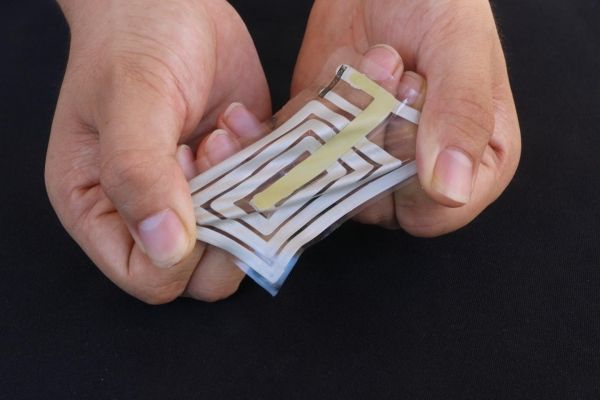Stanford engineers have developed experimental stickers that pick up physiological signals emanating from the skin, then wirelessly beam these health readings to a receiver clipped onto clothing. It’s all part of a system called BodyNet.
We tend to take our skin’s protective function for granted, ignoring its other roles in signaling subtleties like a fluttering heart or a flush of embarrassment.
Now, Stanford engineers have developed a way to detect physiological signals emanating from the skin with sensors that stick like band-aids and beam wireless readings to a receiver clipped onto clothing.
To demonstrate this wearable technology, the researchers stuck sensors to the wrist and abdomen of one test subject to monitor the person’s pulse and respiration by detecting how their skin stretched and contracted with each heartbeat or breath. Likewise, stickers on the person’s elbows and knees tracked arm and leg motions by gauging the minute tightening or relaxation of the skin each time the corresponding muscle flexed.
Read more at: Stanford University
Using metallic ink, researchers screen-print an antenna and sensor onto a stretchable sticker designed to adhere to skin and track pulse and other health indicators, and beam these readings to a receiver on a person's clothing. (Photo Credit: Bao lab)


